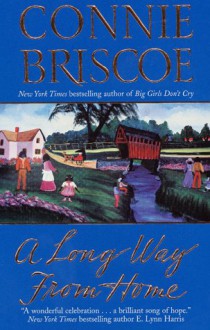In Connie Briscoe's third novel, the connotations of home are anything but heartwarming. For an enslaved mother, daughter, and grandmother, Montpelier plantation in Virginia is a living hell- and the proprietor, at least initially, is none other than President James Madison. A Long Way from Home...
show more
In Connie Briscoe's third novel, the connotations of home are anything but heartwarming. For an enslaved mother, daughter, and grandmother, Montpelier plantation in Virginia is a living hell- and the proprietor, at least initially, is none other than President James Madison. A Long Way from Home opens during Madison's lifetime, when Susie and her daughter Clara serve the First Couple as house slaves. Yet even this regime seems civilized compared to the havoc unleashed by Madison's brutal stepson. As Clara fends off (and ultimately succumbs to) the sexual advances of one master after another, the author conjures up the entire world of the "peculiar institution."It is Susie's granddaughter and namesake, Susan, who first leaves Montpelier. Not, of course, voluntarily: she is sold to a family living in Richmond. Chained in the back of a departing wagon, she "clenched her teeth and stared at the sky. How dare the day be so clear, so beautiful, on this, the worst day of her life." But as the Civil War erupts, Susan ponders the possibility of a more joyous liberation. As Briscoe makes clear, the prospect elicited a complex blend of emotions from many slaves- Susan, for example, has been lulled into considering herself a part (if a diminished part) of her white master's family. A Long Way from Home does occasionally fall back on the pat formulas of the television miniseries, and Briscoe doesn't manage to quite ignite Susan's conflicted feelings about bondage and freedom. But Susan's postwar travails do convey the reality that Reconstruction was not only a political process but also a painfully personal one. --Katherine Anderson
show less

